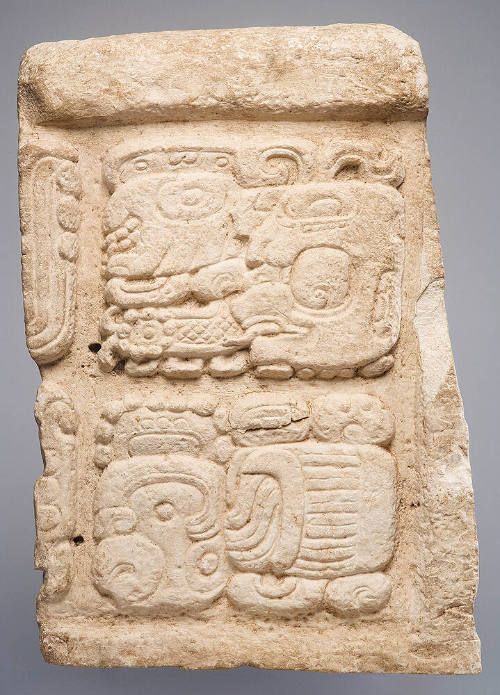Mayan Hieroglyphics
Hieroglyphics are defined as a “system that employs characters in the form of pictures. Those individual signs, called hieroglyphs, may be read either as pictures, as symbols for objects, or as symbols for sounds”. Mayan hieroglyphics date back to 300 or 200 BC and could be considered a form of semasiographic writing in its early form before it evolved into a logosyllabic system to include phonograms (signs representing sounds in the form of single syllables). Mayans were known for their calculations of the calendar year consisting of 260 days with 20 periods of 13 days, and hieroglyphics were essential to reading and deciphering it. This calendar was spaced out as so because of ceremonial and religious events, and while scholars believe that they have a good handle on how to read said hieroglyphics, they are less certain regarding the hieroglyphic text used by the Mayans. Scholars believe that Mayan hieroglyphic text only deals with subjects such as astronomy and agriculture, however, this is hard to say because there is still much to be found in the Maya caves of Yucatan, assuming the Spanish conquerors did not destroy them. The cave system in this region is quite vast, and it is believed that when the Spanish conquerors did try to take over the land and people, the priests hid these documents in the safest place they could find which were the corridors within the caves of Yucatan said to be a “realm of the gods” while also serving as a dry depository (Lacombe & d’Obrenovic).
Mayan Hieroglyphics from 250 to 850 AD contained patterns through historical analysis that led scholars to categorize these scripts as a “prestige language” called “Classic Ch’olti’an” (Houston). “We conclude by exploring the possibility that Ch’olti’an was a prestige language that was shared by elites, literati, and priests and had a profound effect on personal and group status in ancient Maya kingdoms” (Houston), as stated in an anthropology journal. This is claiming that only the elite and priests were the ones who obtained this literary domain. Writing was considered a sacred activity stemming from divine origins.
The ability to write hieroglyphs was considered a sacred activity because the people believed that the scribes were seen as intermediaries between them and the gods. They were believed to have special abilities that allowed them knowledge to communicate and transcribe these divine messages. Some of the elite were also able to read these scripts because they had both the time and resources to educate themselves on the hundreds of symbols used that represented sounds, words, or concepts. Most texts were written during 250 - 900 AD, or the Classic Period, on a variety of media such as personal items, architectural elements, and stone monuments, but that's not all. Certain, special, Mayan texts were written “on bark cloths, made from the inner bark of certain trees (the main being the ficus tree), as folding books from the Post-Classic period (AD 1000–1519)” (Hu, Gayol, Odobez, Gatica-Perez). Additionally, only three books, one of which is the Dresden Codex that I will talk about later, are known to have survived the Spanish conquest.
